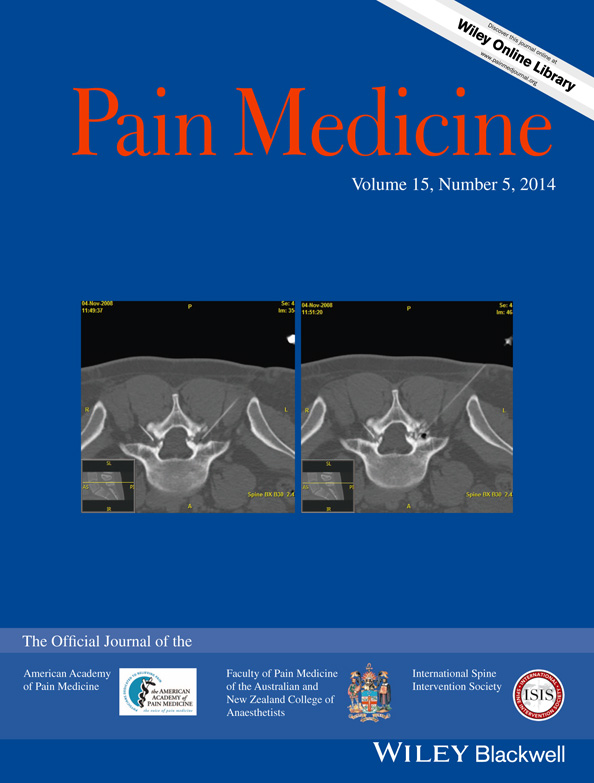Pain Quality of Life as Measured by Utilities
Abstract
Objective
Utilities are values of health-related quality of life (HRQoL) based on patient preference for a health status. The purpose of this study was to compare indirect measures to a directly elicited utility.
Design
Cross-sectional study.
Setting and Patients
Emory Spine Center and the Emory Center for Chronic Pain at Crawford Long Hospital. Patients at least 18 years of age with chronic pain, defined as pain that persists beyond the normal time of healing, usually beyond 6 months.
Measures
Chronic pain subjects completed a paper-based, self-administered time trade-off (TTO) survey, EQ-5D survey, and a face-to-face (FTF) TTO interview. Current pain severity was graded using the Numeric Rating Scale-11, subsequently stratified into no (0), mild (1–3), moderate (4–6), and severe (7–10) pain.
Results
Paired t test comparing FTF TTO and proxy utility measures stratified by severity revealed FTF TTO utility values significantly higher than EQ-5D utility values for all pain severities (overall mean difference 0.18, standard deviation [SD] 0.30, P < 0.001; Pearson's correlation 0.34, P < 0.0001); FTF TTO utility values were lower than paper TTO utility values, reaching statistical significance for mild and moderate pain (overall mean difference 0.09, SD 0.29, P = 0.0006; Pearson's correlation 0.38, P < 0.0001).
Conclusions
This study demonstrates that the EQ-5D overestimates, whereas the paper version of TTO underestimates, the impact of pain on HRQoL compared with the directly elicited FTF TTO utility. Our findings provide preliminary evidence that utilities vary by method, and directly elicited utility values differ from indirectly elicited measures.




